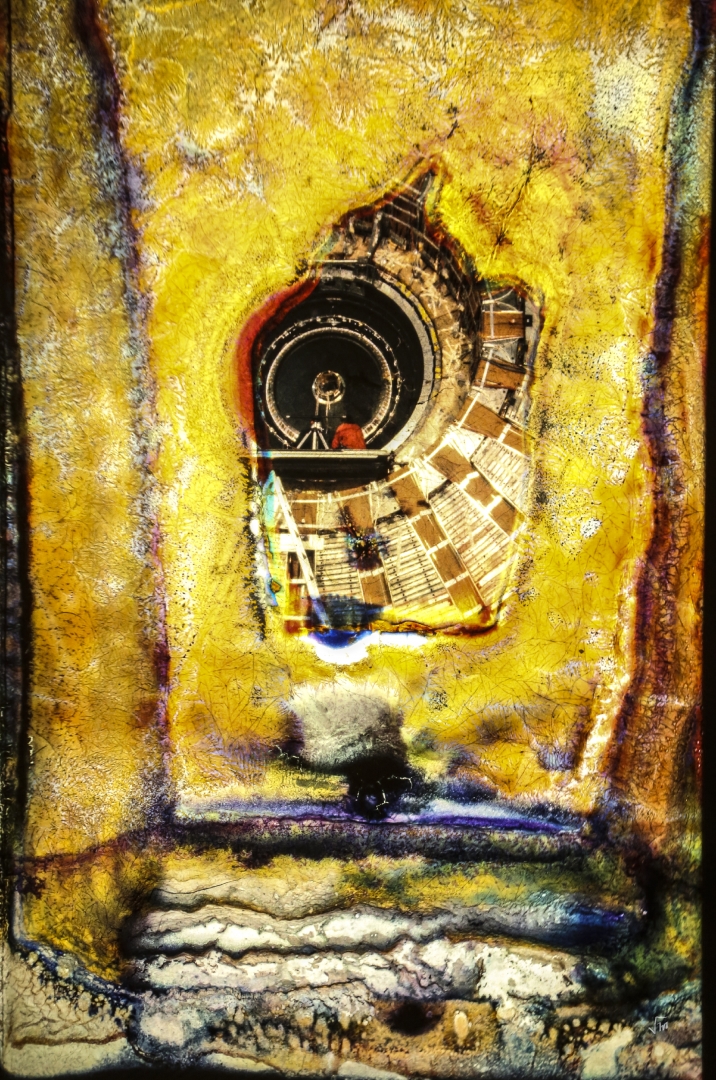Do you have old photographic slides at home, capturing images from the 20th century in a 24x36mm plastic frame and requiring a projector to see them properly? If you have, and you are keen to keep them in good condition, check them out from time to time. Improper storage may well cause your memories to degrade. But this also means you may be sitting on a cache of unpredictable pieces of art, thanks to the creative helping hand of mould! This is what happened to dozens of CERN slides from the 1980s that were recently discovered in very poor condition on the site.
After some 30 years of slow degradation, the mould (bacteria) growing on the slides had slowly eaten away at the gelatine (proteins) on the surface. The slides were mostly copies of negatives dating from the time of LEP’s construction. While CERN was looking for matter at 10-18 cm size, the 10-3 cm microorganisms were happily digesting our Organization’s photographic heritage!
Fortunately, the mould had attacked only a few hundred slides, in contrast to the 120,000 black and white and 300,000 colour photos that CERN has succeeded in preserving over the years. And a few of the mouldy slides have duplicates where the original image continues to exist unaffected.
The mould monsters likely came to life in damp conditions, and, through the transfer of enzymes to the surface of the slide, broke down the organic matter on its surface before absorbing the digested nutrients. Together with an abundant supply of slide film food, the mould spores had absolutely ideal conditions to successfully colonise the slides.
The resulting propagation seems as tricky to predict as cosmic particles crossing the earth and appears to be completely random! Colours and shapes in the original images have been altered in a chaotic way, while the underlying framework of the original photography has kept its design. The end result is a fascinating collision between physics, chemistry, biology and art.

So far, 25 of these slides have been digitised and printed and they form part of a growing image library known as the CERN “VolMeur Collection” (the name deriving from the surnames of the two members of CERN personnel who have been working on capturing these images in the context of the CERN Digital Memory Project).
The nascent collection was recently printed and exhibited at CERN, and there were many enquiries from people interested in purchasing mould for their walls! The CERN Digital Memory Project, working with the CERN Photo Club, is therefore offering an opportunity to purchase a limited number of these unique prints.
30 copies of each image will be printed by a professional laboratory in Geneva in either 40x60 or 60x80 cm sizes, with prices starting from 300CHF. The printing will be on Chromaluxe® aluminium sheets, using a process known as Subligraphie® which uses a special press that reaches a temperature of 200 degrees Celsius to melt the printing inks into the metal. The result is a long-lasting, lightweight, fireproof, waterproof, scratch-proof and UV-resistant print. No mould will attack these!
The sale of these prints will allow the CERN Digital Memory Project to pay for the digitisation and printing of further similar slide images for the CERN VolMeur Collection, thereby expanding the image stock. This will allow CERN to create a unique exhibition resource for the Organization.
The sale will open to the general public in two weeks’ time, but, prior to that, purchasing precedence is being given to CERN personnel and retirees who wish to place advance orders.
If you would like to order an image, please email volmeur@cern.ch for more details or get in touch via the dedicated web site http://cern.ch/volmeur. Prints will be sold on a first come, first served basis.

